Product photography is important for branding in businesses especially on platforms like e-commerce websites such as Amazon, eBay, Shopify and Etsy. A potential customer is greatly persuaded to make purchases based on visual appeal. Hence, there is a strong need to spend money on the cameras.
Modern cameras have remarkable features like high resolutions, great lens support, and advanced videography capabilities. With these tools, it’s easier than ever to take professional level images. Whether you’re an entry-level photographer in search of inexpensive camera options or a veteran looking to upgrade to newer, high-tier cameras, you can cut your expenses by understanding the basics.
This article will help you dig more information about the alternative, affordable and expensive products. It has features, pros, and cons to help you decide to choose your perfect camera. In the end, you will have the right information that will help you make the perfect choice.
Role of a Camera in Capturing High-Quality Product Photos:
A camera is the cornerstone for providing the clarity and precision needed to create compelling visuals for product photography.
High-quality product photos can enhance a brand’s credibility, attract potential buyers, and increase sales. Cameras designed for professional photography offer advanced settings that allow you to control exposure, focus, and lighting, ensuring your products look their best.
Key features like high resolution, dynamic range, and color accuracy help capture intricate details and true-to-life colors, essential for showcasing textures, materials, and finishes. Advanced autofocus systems ensure sharpness, even in complex scenes, while adjustable white balance settings help maintain color consistency across various lighting conditions.
For example, a camera for a photo and video shoot with 4K or 6K video capabilities is perfect for creating engaging multimedia content. Additional features such as in-camera image stabilization and burst shooting modes allow you to capture products in dynamic setups without compromising quality.
Macro lenses are ideal for capturing close-ups of intricate designs, while wide-angle lenses are better for larger or group products. Wireless connectivity options enable seamless file transfers, saving time in your workflow.
A reliable camera for product photography ensures consistency and efficiency, minimizing the need for extensive editing during post-production. Whether you’re shooting for Amazon product photography, e-commerce stores, or high-end marketing campaigns, the right camera is indispensable for achieving professional results.
What Type of Camera is Good for Product Photography?
Choosing the right camera for product photography depends on your specific needs, budget, and expertise. Below, we explore various types of cameras, their features, pros, and cons to help you make an informed decision.
Action Cameras
If you’re looking for a compact, durable, and often waterproof camera, then the action camera is the one. They excel in capturing wide-angle shots and can record high-definition videos with 4K and 8K resolutions. This camera is also lightweight and portable.
Also, quite affordable compared to other camera types. The disadvantage of an action camera is the limited control for advanced photography. They have fixed lenses with less flexibility. For detailed product shots, an action camera is not ideal compared to others.
Although action cameras were initially created for sports photography, their usability has gained them a place in pretty much all of the different types of photography. It’s now common to see them being used in weddings and travel videos mainly.
DSLR Cameras (Including SLR)
DSLR (Digital Single Lens Reflex) is a digital camera that combines the optics and mechanisms of a single-lens reflex camera with a state image sensor and digitally records the images from the sensor. SLR (Single-Lens Reflex) is a camera that typically uses a mirror and prism system that permits the photographer to view through the lens and see exactly what will be captured.
They offer exceptional image quality and a wide of interchangeable lenses with manual controls for precision photography. It is the second-most popular type of camera in the market. DSLRs use digital sensors to capture images, while SLRs rely mainly on film.
DSLR provides image resolution and dynamic range. This is great for capturing intricate product details. This has a robust build with advanced features like HDR and low-light performance. On the other hand, DSLR is bulkier and heavier to hold.
Also, these are quite expensive cameras compared to compact cameras. This has a steeper learning curve for beginners.
Mirrorless Cameras
A mirrorless camera is an interchangeable lens camera (Mirrorless ILC). This is a digital camera which is in contrast to DSLRs. Mirrorless cameras don’t use a mirror to ensure that the image presented to the photographer through the viewfinder is identical to that taken by the camera.
It comes to replace DSLRs, which have historically dominated the camera industry. They are known for their lightweight design, mirrorless cameras providing excellent image quality, and advanced features like an electronic viewfinder and silent shooting modes.
It’s compact and portable and offer a wide range of lens options. The downside of mirrorless cameras is shorter battery life with limited availability of affordable lenses and can be costly for advanced models.
Compact Cameras
Compact cameras are small and designed to be easy to use. They are known as point-and-shoot cameras with fixed lenses. The cameras are ideal for quick and casual photography. Also, affordable and user-friendly. Because of their automatic settings, it’s quite easy to use.
The drawback of a compact camera is limited manual controls and have lower image quality compared to DSLRs and Mirrorless cameras. They are not suitable for professional-grade product photography.
Camcorders
Camcorders are primarily designed for video recording but they can also capture still images. The cameras are equipped with optical zoom and image stabilization. These are also typically equipped with an articulating screen mounted on the left side.
Camcorders are hot-swappable with a battery, recording media, and an optical zoom lens. Photographers consider this to be excellent for video-centric projects with their long battery life. Also, camcorders have an ergonomic design for extended uses.
On the flip side, camcorders are not suitable for professional-grade product photography since they have limited still photography capabilities. The image quality is lower for static shots and it is quite bulkier compared to compact & DSLR cameras.
Digital & Bullet Cameras
A digital camera, also known as a digicam captures photographs in digital memory. Most cameras produced today are digital, largely replacing cameras that capture photos on photographic film or film stock. Digital cameras are versatile with a wide variety of options.
They can display images on a screen immediately after taking photos. The camera can crop and stitch pictures and perform some basic image editing. Digital cameras vary significantly in quality, as these don’t have interchangeable lenses.
Bullet cameras are the most common security camera type you can see on the street. They typically use two types of camera lenses, fixed lens, and varifocal lens, as these are durable and weather-resistant.
Bullet cameras are a different type of camera, mainly used for surveillance rather than photography. The reason for including them in this list is to showcase all kinds of cameras that have significantly impacted the history of camera innovation.
Bridge Cameras
Bridge cameras are digital cameras that combine features of DSLRs and compact cameras. These cameras typically feature full manual controls over shutter speed, aperture, ISO sensitivity, color balance, and metering. Bridge cameras are versatile for photography needs with a larger zoom range without changing lenses. Also, it is more affordable than DSLRs.
However, they are bulkier than compact and DSLR cameras and have a smaller range of ISO sensitivity because of their typically smaller image sensor. So, it’s not ideal for low-light conditions.
Instant Cameras
An instant camera is a camera that prints photos immediately after capturing them. They are known as Polaroid Camera. Instant cameras became popular for their unique charm and simplicity. They’re easy to use, affordable, and bring instant fun by giving you printed photos right away.
Yet, they come with limited image quality. The film that is used in Polaroid cameras is quite expensive. Also, Instant cameras are not suitable for professional use.
Smartphone Cameras
A smartphone camera or camera phone is a mobile phone that can capture photos and record videos using one or more built-in digital cameras. They come with advanced features like multiple lenses, AI enhancements, and 4K video recording.
Also it can send the resulting image wirelessly and conveniently. Most of them are smaller and simpler than the separate digital cameras. The principal benefits of camera phones are cost and compactness.
Camera phones are extremely portable and always accessible with advanced software for editing and filters. They are great for social media and small-scale e-commerce photography. For small businesses, owners, clients, and customers, showcasing product photos and details wirelessly is a game changer. They make the process incredibly convenient.
So it enable businesses to quickly capture, edit, and share images across social media, websites, or directly with clients, ensuring faster communications and engagement. However, they have limited manual controls compared to DSLRs.
Also, the image quality depends on the phone model, since it struggles with low-light photography.
Film cameras
Film cameras use analog film to capture images, providing a vintage and artistic touch. Most film cameras work the same way as DLSR does. They have a unique aesthetic quality with reliance on batteries.
For creative, artistic, and expressive projects film cameras are considered to be the best. Despite that, film paper and processing costs add up with limited flexibility for retakes. Also, they require more skill and experience to operate.
Medium Format Cameras
Medium format cameras have traditionally been referred to as a film format in photography. These days, the term applies to film and digital cameras that record images on media larger than 24 mm × 36 mm used in 35 mm photography. They have larger sensors that produce higher image resolution than full-frame cameras and deliver exceptional detail and dynamic range.
They are best for high-end product photography with superior image resolution and depth. Medium format cameras are used a lot for large print and advertisement agencies.
However, they are painfully expensive and require professional expertise since they are heavy and less portable.
Digital Cine Cameras
Digital cine cameras are built for cinematic video production but also excel in capturing stills. The video quality is exceptional when shooting with these cameras.
They are ideal for high-end multimedia projects. Still, highly expensive and require expertise to operate as they are bulky and less versatile.
Drone Cameras
Drone cameras offer aerial perspective, enabling unique angles and dynamic shots for landscape photography. They have advanced image stabilization for smooth shots with high-resolution imaging capabilities. Yet, they are costly and require skill to operate.
Also, the battery life is quite restrictive. They have a limited use for close-up product photography.
360 – Degree Cameras
360-degree cameras capture spherical images, allowing viewers to see objects from all angles. Also, known as an omnidirectional camera. They are important in areas where large visual field coverage is needed. They are mostly used in panoramic photography and robotics.
They are perfect for interactive product displays for compact and easy to use. Despite that, they have limited editing options requiring specific software for viewing. Not ideal for product photography.
Rugged Cameras
Rugged cameras are designed for extreme conditions, offering waterproof and shockproof features. They are compact-portable, durable, and weather-resistant.
Even so, they have limited advanced settings with smaller sensors to reduce image quality. Not suitable for studio photography.
Disposable Cameras
Disposable cameras are single-use cameras with built-in film, offering simplicity and convenience. They are affordable compared to other cameras. They are great for casual projects as they are lightweight and portable. Although, they are not eco-friendly since it’s not reusable with limited exposure settings. The image quality of this camera is quite poor.
Each camera type offers unique benefits and limitations. For professional results, DSLR, mirrorless, or medium format cameras are excellent options due to their superior image quality and versatility. For creative or niche needs, consider drone cameras or 360-degree cameras. Evaluate your requirements to find the best camera for product photography that aligns with your vision.
Expert Picks Cameras in 2025 for Shooting product photos:
E-commerce photography requires precision and reliability to showcase products in their best light. Here, we will delve into various camera segments ideal for this purpose.
Each segment includes two expert-recommended models from 2025 and their features, pros, and cons. Additionally, we explore the impact of smartphone cameras, highlighting their role in empowering new and growing businesses.
DSLR Cameras – Expert Picks:
Canon EOS 90D![]()
The Canon EOS 90D is a mid-range APS-C SLR with a dual-pixel CMOS sensor. This camera also comes with built-in Wi-Fi and Bluetooth. The camera has 33 megapixels with a maximum resolution (6960×4640), also the lens is Canon EF/EF-S.
Also, the camera weight is 701g (1.55lb/24.73oz).
Pros: The camera has a 4K video recording at 30fps with high-resolution images. This has versatile connectivity options like USB, HDMI, Microphone port, and remote control.
The autofocus is excellent as it features, Phase Detect, Tracking, Face-Detection, Live-View, and Selective single-point. This camera is sturdy and built for extended shoots with long battery life.
Cons: Since the camera is sturdy, the camera tends to be heavy and bulky to hold. The only drawback that can affect is the limited 4K frame rates. This camera has a complex menu system with no in-body image stabilization for beginners.
Nikon D7500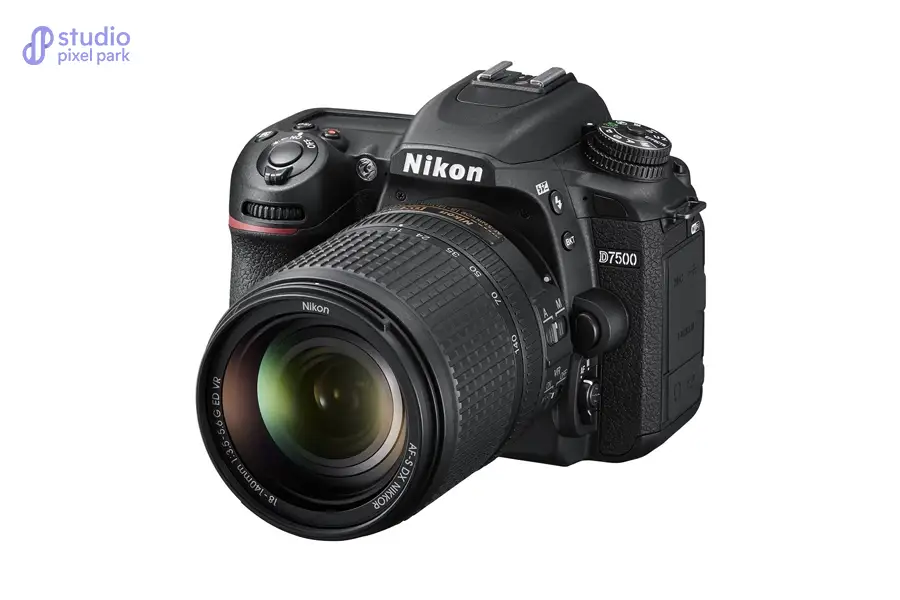
The Nikon D7500 is a DSLR that is updated from its previous model D7200 and also borrowed some specs from D500 as well. This has a 20.9MP DX-format sensor with 4K UHD video up to 30fps.
While this keeps the 51-point AF system from the D7200, it gains the 180k-pixel metering sensor from the D500 that enables features like highlighted weighted metering. The camera image processor is EXPEED 5 with an ISO range from 100 to 51,200.
The camera weight is 720g (1.59lb/25.40oz).
Pros: The camera has a dynamic range with solid low-light performance. This has a fast burst rate from 30sec to 1/8000sec. This is a weather-sealed and built-in flash camera with a range of 12.00m(at ISO 100).
This has a lot of metering modes such as Multi, Center-weighted, Highlight-weighted, and Spot. The price point of this camera is affordable compared to others we have seen this year.
Cons: The camera has a smaller sensor compared to other full-frame cameras. This has a limited touchscreen functionality. Comes with a single memory card slot with no headphone jack for audio monitoring.
One thing that we have found is that the camera drains the battery fast during video recording. So, it’s necessary to keep an extra battery and power bank to charge the battery. The battery can be a little bit costly since it’s hard to find.
Sony A7R V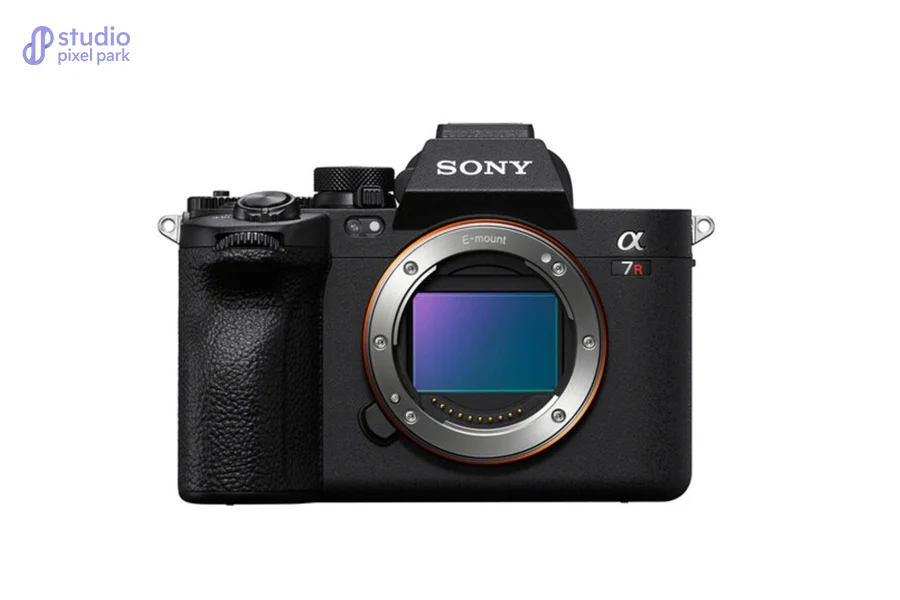
This 61MP camera comes with a full-frame sensor delivering high-resolution images. This has an advanced autofocus system with 759 phase-detection points and real-time eye autofocus for precise subject tracking.
This is ergonomically designed with built-in image stabilization (IBIS) providing high-resolution images and videos. Ideal for professionals looking for a camera that can shoot 8K movie recordings with its 4-axis multi-angle LCD monitor and its first-class high-resolution imaging tool (EVF).
The camera weight is 723g (1.59lb/25.50oz).
Pros: The camera has a BSI-CMOS with a Bionz XR processor. This camera is suitable for large prints and cropping flexibility. The well-built autofocus system gives accurate and fast subject tracking.
The in-body stabilization enhances handheld shooting with its sensor shift. This also has a user-friendly interface with intuitive controls and easy settings.
Cons: This is an expensive camera with complex features. Since it provides intuitive controls and customizable settings, this can be a bit complex for beginners. While Sony’s lens lineup is extensive, it may not match the variety available for other systems.
The size of this camera is larger and heavier, potentially affecting portability. The battery life is moderate in turn, additional batteries may be required for extended shooting.
Leica SL2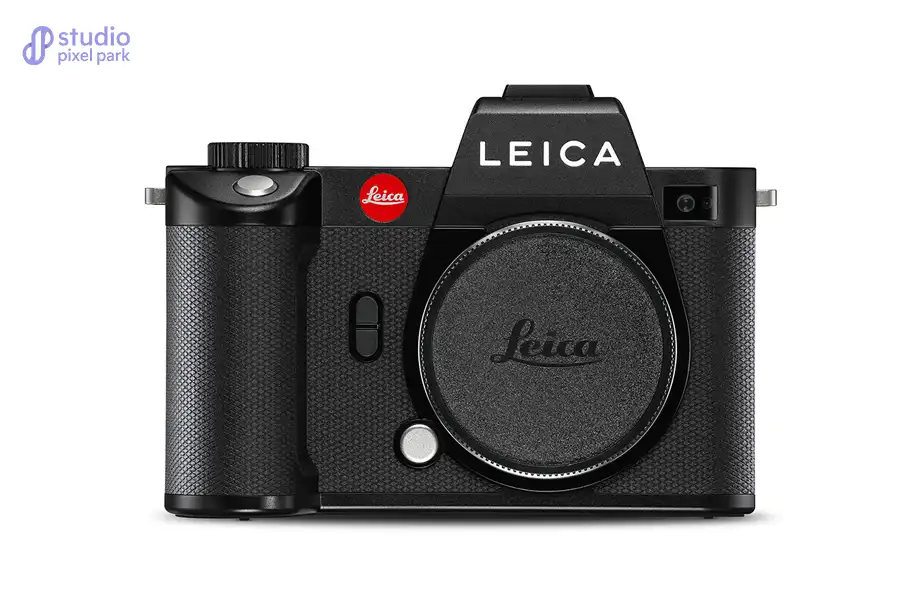
The Leica SL2 is a 47.3MP full-frame camera that has sensor-shift image stabilization and the camera can move the sensor to produce 187MP images. This camera brings Leica’s signature color rendition with a contrast-detection autofocus system with 225 AF points.
Due to the autofocus system, this camera is suitable for product and still photography. The ergonomics and design of this camera are versatile with intuitive controls and a high-resolution EVF for precise compositions.
The camera weight is 916g (2.02lb/32.31oz).
Pros: The 47MP sensor provides sharp, detailed images with their dynamic range. The body of this camera is robust and weather-sealed magnesium alloy designed for durability. In turn, this has earned an IP54 rating. This can record 4k videos at up to 60fps.
The majority of manual dials lie on the touchscreen for easier control with a user-friendly interface. The SL2’s body is redesigned to match its predecessor. The classic Leica aesthetic appeals to photographers who value traditional craftsmanship.
Cons: The contrast-detection system may not be as fast or accurate as phase-detection, which can affect fast-moving subjects. The camera doesn’t have No In-Body Stabilization (IBIS), which uses lens stabilization for handheld shooting.
The L-mount lens ecosystem is smaller compared to other systems. This is one of the most expensive cameras in the high-end market. The robust build camera can be a little heavier.
DSLR cameras are quite known for their superior image quality, interchangeable lenses, and adaptability. This makes them a top choice for any professional photographers for an e-commerce platform. They always provide excellent control over exposure, depth of field, and lighting.
Pro Tips for Stunning DSLR Product Shots:
- Adjust the white balance in the camera settings.
- Maintain a low ISO with automatic full focus.
- Fix the shutter speed and skip the flash.
- Shoot in RAW format with a small aperture.
- Use a tripod for stability in a controlled environment with good lighting and a clean background.
Mirrorless Cameras – Expert Picks:
Sony Alpha A7 IV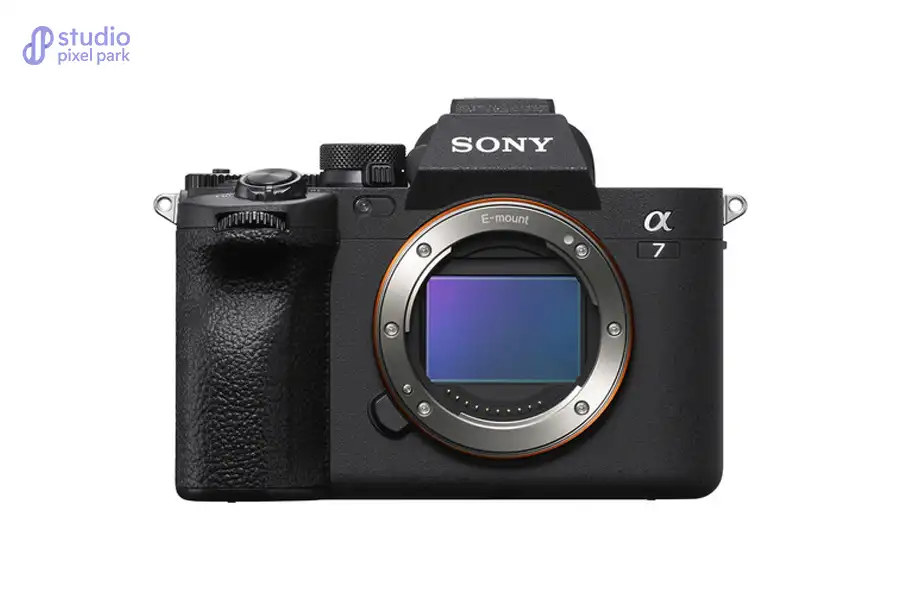
The Sony A7 IV is a 33MP camera that has a full-frame sensor with a touchscreen interface. This camera is a versatile mirrorless camera ideal for hybrid shooters combining high-quality photography and videography
This can provide 4K cinematic video at 60fps with real-time eye autofocus. The camera uses sensor shift for image stabilization. Ideal for action and wildlife photos as this can do continuous shooting at 10fps.
The camera weight is 659g (1.45lb/23.25oz).
Pros: The camera produces vibrant yet natural-looking colors with subject tracking for stills and video. This has dual card slots, that support CFexpress Type A and SD UHS-II cards for high-speed data transfer. For smoother handheld shots, the camera uses 5.5 stops of In-Body Stabilization(IBIS).
Sony A7 IV has adjustable connectivity options like USB-C, full-size HDMI, and wireless options via remote control(smartphone). The camera is built robustly with a weather-sealed magnesium alloy body.
Cons: The camera can affect fast-moving subjects with rolling shutter in 4k at 60fps. This camera comes with only just a body as the camera doesn’t contain a lens.
The camera has a complex in-built system. It has limited CFexpress compatibility, as Type A cards are less common and expensive. The battery life is average and requires frequent charging for heavy usage. The camera doesn’t have a built-in flash. So it’s need external flash via hot shoe to use.
Canon EOS R6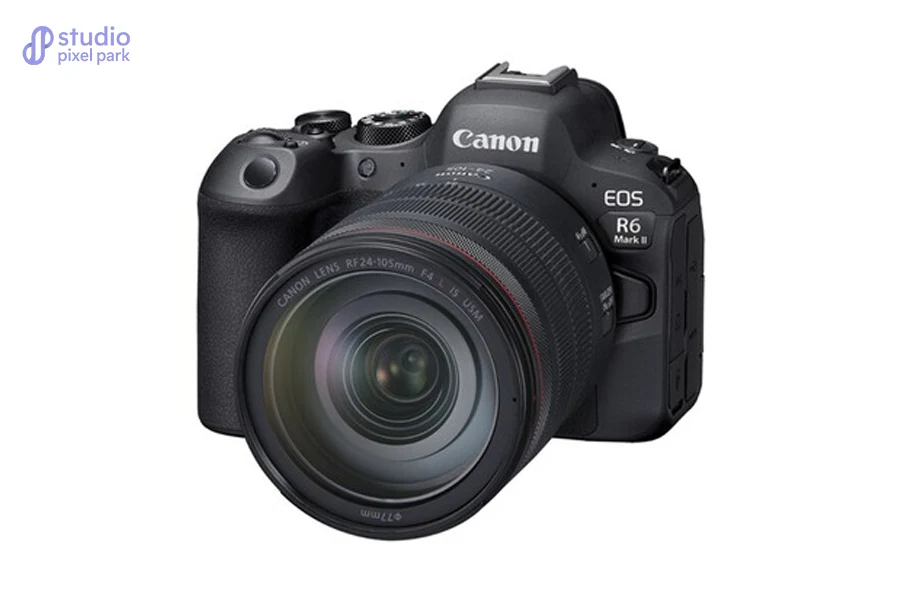
The Canon EOS R6 is a 20MP full-frame mirrorless camera with a CMOS sensor. This has Dual Pixel CMOS AF II with 1,053 points across the entire frame. The camera can be shooting burst at 20fps with its electronic shutter and 12fps with the mechanical shutter.
The battery life is approximately 380 shots per charge. The camera weight is 680g (1.50lb/23.99oz). The camera has exceptional autofocus with fast and accurate subject tracking, live view, selective single-point, and eye detection.
The camera weight is 680g (1.50lb/23.99oz).
Pros: The camera can record 4K video up to 60fps with 10-bit 4:2:2 color depth. This can reduce the camera shake for handheld shooting with its In-Body Image Stabilization(IBIS). The camera features dual SD memory card slots.
This has a user-friendly interface with intuitive controls and a menu system. Due to the Dual Pixel CMOS AF II, the system can provide smooth and reliable autofocus during the shoot. This has also a 3.69-million-dot OLED electronic viewfinder.
Cons: The camera has a lower resolution with its 20MP sensor which may not meet your expectation for higher resolution. Some have experienced overheating issues during extended video recording sessions.
Also, this has a limited lens selection, as this uses RF lenses compared to others that use EF lenses. The price of this camera is costly, especially when investing in lenses. The battery is average with a shorter lifespan.
Fujifilm X-T5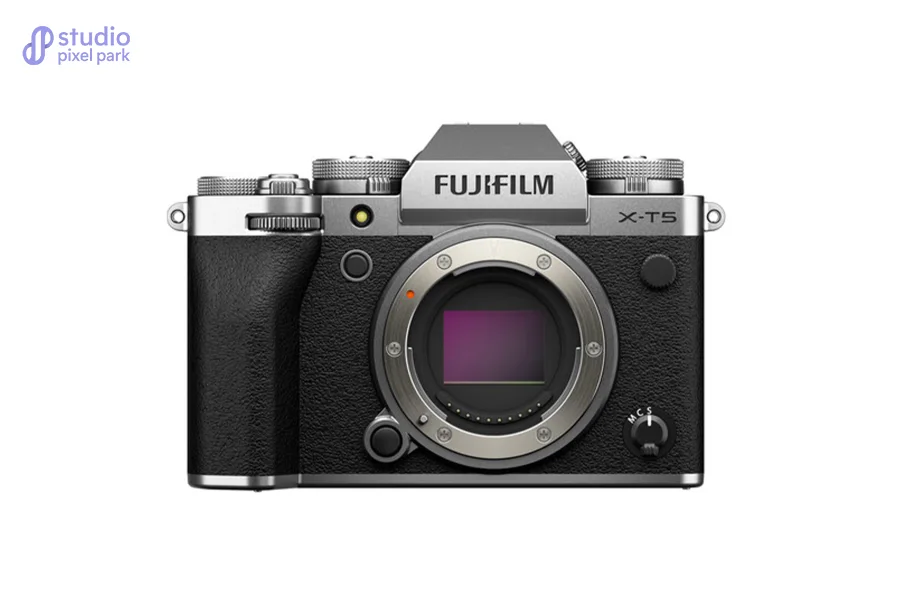
The Fujifilm X-T5 is an APS-C camera with a 40MP X-Trans 5 HR CMOS sensor. The camera is good for still, portrait, wildlife, travel, and landscape photography. This has an advanced autofocus phase detection with 425 points. This can record 6.2K video up to 30fps and 4K up to 60fps.
The camera weight is 557g (1.23lb/19.65oz).
Pros: Due to its compact and lightweight nature, this is considered ideal for travel and street photography. The camera can produce sharp and detailed images with excellent color reproduction. In turn, this offers high-resolution video recording options.
The classic dials and customizable buttons are in this model just like its predecessors. This has built-in dual card slots to ensure data redundancy for professional workflows. The camera has a 3.69-million-dot electronic viewfinder with 0.8x magnification. The battery life is approximately 740 shots per charge.
Cons: The APS-C sensor size is smaller which may result in less dynamic range compared to full-frame sensors. Also, the lens has a limited lens selection. The autofocus of this camera is slightly improved from its predecessor.
This doesn’t have No In-Body Image Stabilization (IBIS), but it relies on lens stabilization. The price is higher compared to other APS-C mirrorless cameras in the market.
Leica Q3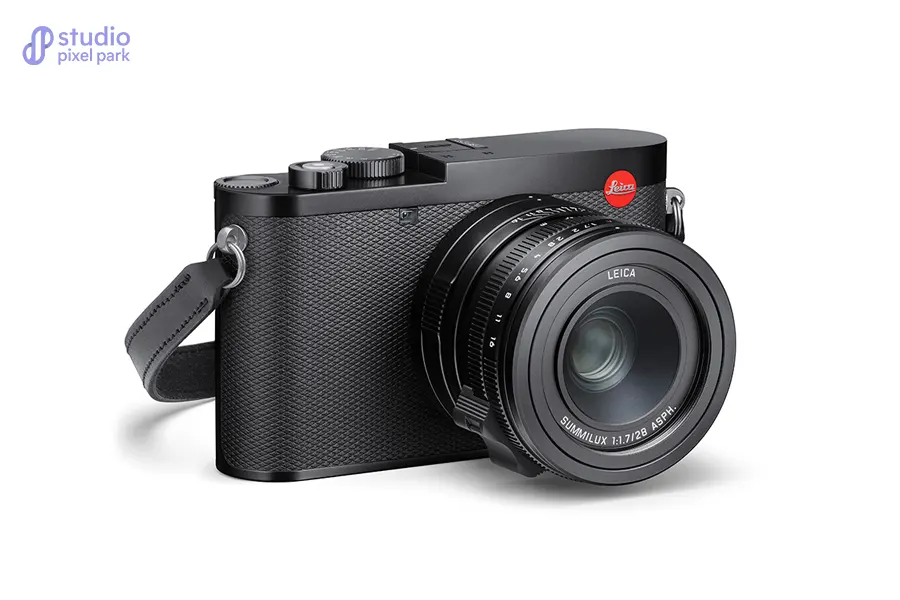
The Leica Q3 is a luxury compact full-frame mirrorless camera designed for professionals who value simplicity and premium build quality. This has a 60MP sensor with unparalleled detail and high resolution.
This compact body mirrorless camera can shoot 8K videos. For precise composition, the camera uses an OLED EVF viewfinder. The camera is IP52 weather-resistant with enhanced durability for outdoor shooting.
The camera weight is 772g (1.70lb/27.23oz).
Pros: The camera provides class-leading sharpness and color accuracy with a minimalist design. Also, this has intuitive control and a sleek with a premium and luxurious build. The camera’s sensor type is BSI-CMOS and the processor is Leica Maestro IV. This is one of the cameras that has wireless charging for convenience.
The camera uses optical image stabilization with an electronic viewfinder that has a magnification of 0.79×. The camera has a low-light aperture(f/1.7) and a large sensor excels in dim conditions. This camera is good for those people who want to document their lives with the highest image quality.
Cons: The camera has a fixed lens with limited flexibility compared to interchangeable for most users. The camera is an expensive one making it inaccessible for most users. The customization is fewer with advanced settings compared to others. This has a shorter battery life with frequent recharging for intensive use. The camera is compact yet this is considered heavy.
Mirrorless cameras offer the portability of compact cameras while retaining the functionality of DSLRs. Their advanced autofocus and real-time image previews are particularly helpful for e-commerce.
Pro Tips for Stunning Mirrorless Camera’s Product Shots:
1. Always opt for soft and diffused lighting to avoid harsh shadows. Consider using a light tent or softbox.
2. For sharp details and reduced distortion, use a macro lens with a focal length of 50mm to 100mm.
3. Use a tripod to eliminate the camera shake.
4. Master the manual settings, as it’ll give you to adjust the aperture, shutter speed, and ISO.
5. For post-production use editing software to remove imperfections and maintain a natural look.
Compact Cameras – Expert Picks:
Sony Cyber-Shot RX100 VII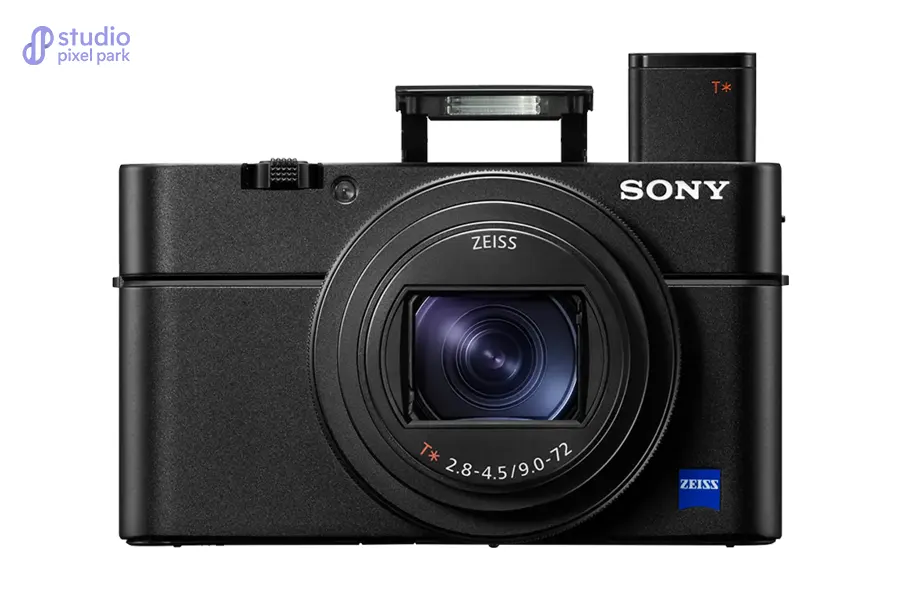
The Sony RX100 VII is a compact pocket-sized camera that has a 20.1MP 1.0-Type Exmor RS CMOS sensor. The camera has a ZEISS Vario-Sonnar T 24-200 lens, with real-time tracking and eye AF. This camera captures up to 20fps with no blackout, ideal for fast-action scenes. The camera is made for travel, family photographers, and vloggers.
The camera weight is 302g (0.67lb/10.65oz).
Pros: The Sony RX100 VII is a compact yet powerful camera with DSLR-like performance. This has industry-leading AF speed with a fast autofocus of 0.02s. The camera has an external mic input and a flip-up screen.
This camera has a built-in retractable electronic viewfinder for better framing with high-quality EVF. For a compact camera, the battery life is decent. This has professional-grade 4K HDR video with S-Log3 dynamic range.
Cons: The camera is premium compared to its competitors. The smaller aperture at the telephoto end affects performance in dim light. This lacks an intuitive touch interface for settings. The camera is not weather-sealed and not ideal for harsh outdoor conditions.
Canon PowerShot G7 X Mark III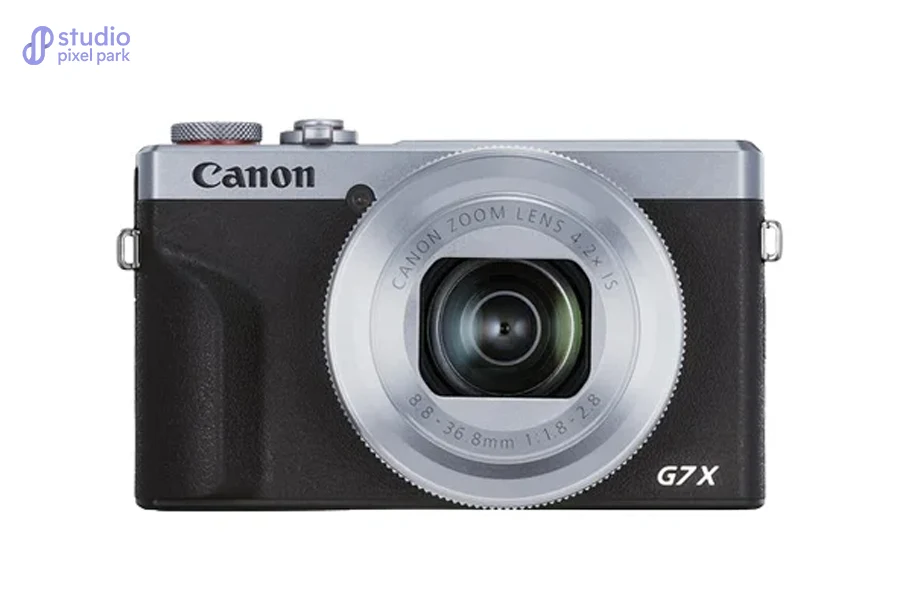
The Canon PowerShot G7 X III is a 20.1MP 1-inch CMOS Sensor camera with a DIGIC 8 Processor. The camera’s lens is a 4.2x optical zoom lens(24-100mm), which is suitable for diverse photography styles. This can record 4K videos with vertical video support for social media content creators.
This compact camera can do live streaming with its built-in support. Ideal for those people who are looking for a compact camera that can better perform in low light.
The camera weight is 304g (0.67lb/10.72oz).
Pros: The camera is an excellent low-light performance with wide f/1.8-2.8 aperture. This is a compact and lightweight camera. This model has a dual-pixel AF to ensure consistent focus during video recording.
The camera is an affordable one with 4K capabilities. The user-friendly interface is helpful for beginners with its touchscreen navigation.
Cons: The battery life is short due to its frequent recharging for extended use. There is no viewfinder, but it relies solely on the LCD screen for composition. There is a heating issue as the prolonged 4k video recording causes it.
The limited burst shooting maxes out at 8fps. Also, the camera is not weather-sealed.
Nikon COOLPIX P1000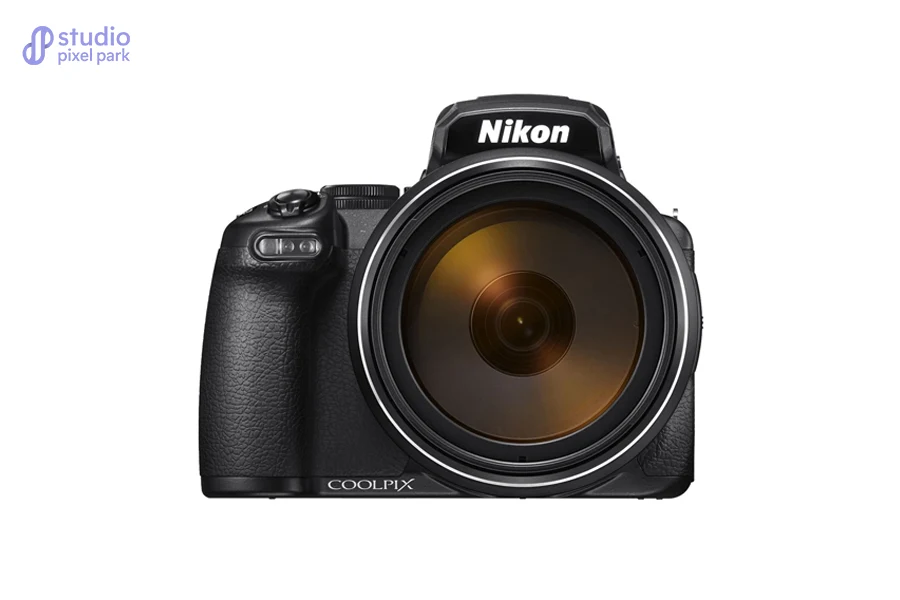
The Nikon COOLPIX P1000 is a specialized compact camera that stands out for its unparalleled zoom capabilities. This has a 16MP 1/2.3-inch BSI CMOS Sensor, that works well in low-light performance. The optical zoom lens is 125x (24-3000mm). This lens is considered to be an extensive zoom range camera compared to any compact camera in the market.
The camera can record 4K UHD video with built-in stereo sound. The camera design is moderately durable.
The camera weight is 1415g (3.12lb/49.91oz).
Pros: The camera has a Dual Detect optical VR (Vibration Reduction), that reduces camera shake for clearer handheld shots. There are two modes, such as Built-In Moon and Bird modes, that help capture celestial objects and birds with minimal effort.
The camera has a sharp EVF and Vari-angle LCD for flexible framing and an electronic viewfinder. The manual control is helpful since it allows for creative freedom with aperture, shutter speed, and ISO adjustments.
Cons: The camera has a limited image quality compared to a larger sensor camera, especially in low light. This is one of the heavy and bulkier cameras weighing around 1.4kg, and it’s not the most portable compact camera.
The autofocus is slow when it’s at full zoom. The limited continuous shooting maxes out at 7fps.
Compact cameras are beginner-friendly with straightforward interfaces. They are ideal for small businesses looking to produce high-quality images without investing heavily in professional equipment.
Pro Tips for Stunning Compact Camera’s Product Shots:
- Utilize a wide aperture (f/1.8 – f/2.8) found in the compact camera that allows a shallow depth of field, isolating the product from the background.
- Optimize ISO for clarity by keeping it as low as (100-400) to ensure minimal noise and sharpness to the images. Higher ISOs can bring graininess, reducing the crispness of product shots.
- Set the correct white balance ensuring the colors appear natural and true to life.
- Compact camera features optical and digital image stabilization to reduce blurring, especially in low-light environments.
- Use a tripod for constant stability to put an end to the camera shake.
Bridge Cameras – Expert Picks:
Panasonic Lumix FZ1000 II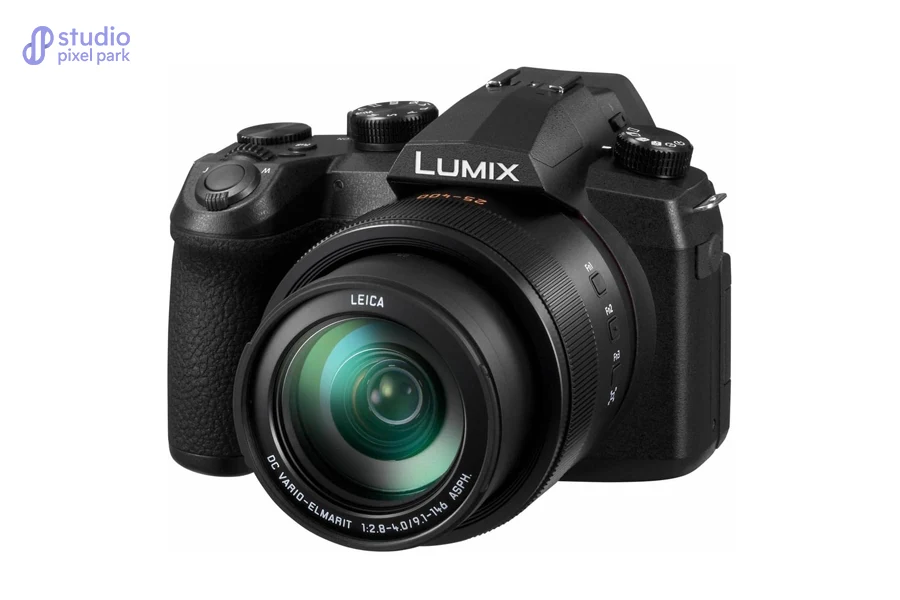
The Panasonic Lumix FZ1000 II is a camera with a 1-inch name 20.1 MP sensor. The lens is 25-400mm equivalent to an F2.8-4 lens. The camera has a fully articulating 3-inch touchscreen display and a 2.36M-dot OLED viewfinder. The optical zoom is 16x with the ability to record 4K video.
The camera weight is 808g (1.78lb/28.50oz).
Pros: The camera is affordable compared to others in the market. The new Zoom Compose Assist will automatically zoom out to locate any subject. This can take bursts of up to 20 shots with AF-C at 7fps. There are various versatile shooting modes.
Cons: The camera is bulkier with limited battery life. Also, the camera has no interchangeable lenses. The camera is not well-equipped for fast-action shooting. The 4K video stabilization is poor quality. This can’t adjust the 4K bit rate.
Sony RX10 IV
The Sony Cyber-shot DSC-RX10 IV is a 20MP 1-inch sensor camera with a new image processor the Bionz X. The camera has a hybrid AF system with 325 phase-detect. This can continuously shoot at a speed of 24fps with reliable image stabilization. The camera comes with a 3-inch tilting touchscreen LCD. The mic and headphone jack are built in.
The camera weight is 1095g (2.41lb/38.62oz).
Pros: The body of the camera is weather-sealed and sturdy. This has an OLED electronic viewfinder. The RX10 uses 4K UHD video. This camera has various tools like S-Log2/3 support, gamma display assist, zebra, and proxy recording. The camera captures high frame rate video at up to 960fps with outstanding zoom capabilities.
Cons: The FHD video quality is poor. Also, the 4K in video stabilization is not great. The camera is bulkier and heavy. This has complex controls for settings that have to be done manually.
Thus, the complex controls are not for beginners. The camera is not good for sports and action photography. The zoom cannot focus on a moving subject. Also, the camera is expensive.
Bridge cameras offer a mix of DSLR features and compact camera simplicity. They are suitable for businesses that need quality without complexity. The camera is a balance between affordability and functionality, making it a choice for product photographers.
Pro Tips for Stunning Bridge Camera’s Product Shots:
- The camera’s versatile zoom range is used to adjust the compositions. For smaller products, zoom in for close-ups. Wide angles (lower focal lengths) can introduce perspective distortion for natural proportions.
- Use Macro Mode to focus on objects as close as 1cm. This will help to capture fine details like textures, patterns, labels, and e-commerce advertising.
- Adjust the aperture to control the depth of field. For smaller use f-stops (f/2.8) to blur the background and isolate the object. For bigger products, use f-stops (f/8-11) for full product focus in catalog shots.
- Master the Manual Focus and Focus Peaking. Use manual focus to ensure sharpness on critical details. Use focus peaking to highlight in-focus areas to achieve precision.
- Bridge cameras have optical and hybrid stabilization. Activate image stabilization (IS) for handheld shooting to counteract minor hand movements, especially at high zoom levels or slow shutter speeds.
Medium Format Cameras – Expert Picks:
Fujifilm GFX 100S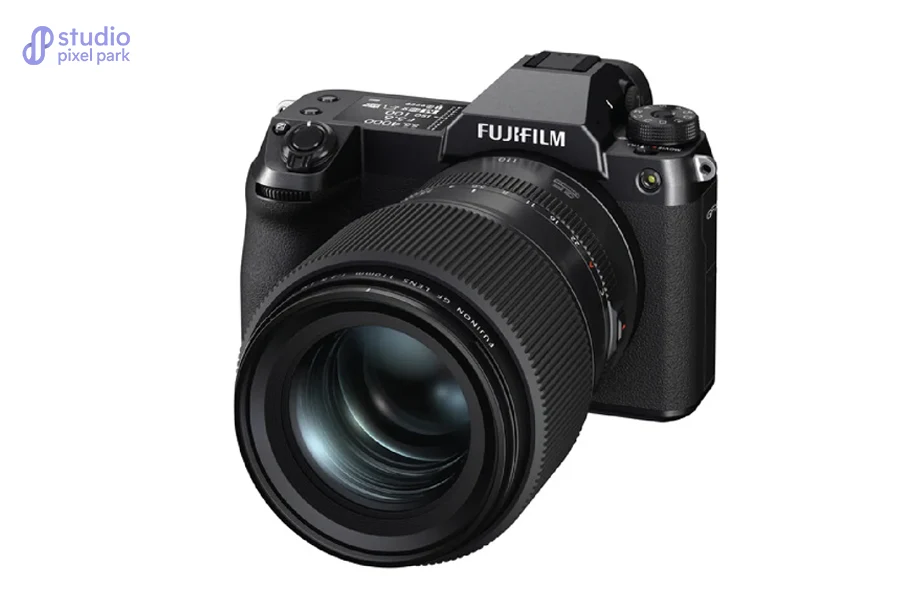
The Fujifilm GFX 100S is a 102MP medium format camera with an in-built BSI-CMOS sensor. The image stabilization offers 6 stops of stabilization, ensuring sharp images even at slower shutter speeds or handheld in low-light conditions.
The camera supports 10-bit 4:2:2 external recording, which is great for still photography. This has a hybrid autofocus system with nearly 100% coverage and a multi-shot mode for capturing 400MP images of static subjects. The camera has dual SD card slots and ports for a mic, headphones, and remote control.
The camera weight is 900g (1.98lb/31.75oz).
Pros: The advanced autofocus system features a phase-detection AF with 425 selectable points for precise subject tracking and focus. This can produce Ultra-High-Resolution images with sharpness and tonality with 4K video recording. The camera has an OLED info display on the top and a fixed 3.69M-dot OLED viewfinder.
The body of the camera is weather-sealed with its durable magnesium alloy. The camera is relatively affordable for a medium format camera compared to other high-end in the market. This includes programmable dials and buttons to suit personal shooting styles, making it user-friendly for professionals.
Cons: The autofocus struggles in low light, due to the AF system is not as fast or accurate as full-frame mirrorless cameras. The lenses are limited with its GF lens lineup which can impact the versatility. The battery life of this camera is average. Without extra batteries, the 460-shot CIPA rating can feel restrictive during extended shoots.
For beginners, the camera system can take some time to fully understand and utilize the potential. The camera has a tilting LCD which is less flexible compared to fully articulating designs.
Hasselblad X2D 100C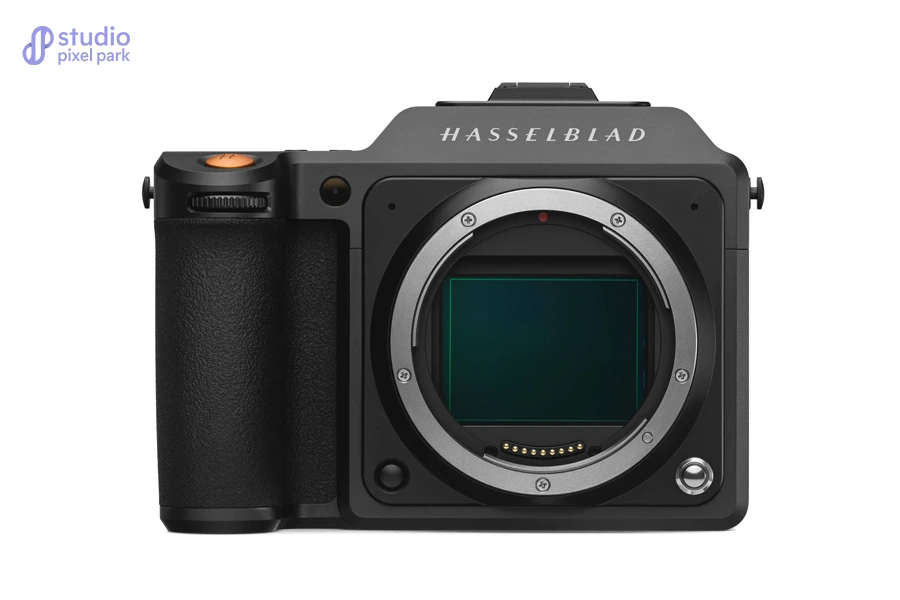
The Hasselblad X2D 100C is a top-tier choice for professional photographers in 2025. This has a 100MP BSI medium format sensor with a 15-stop dynamic range for maximum post-processing flexibility.
The camera comes with a built-in 1TB SSD to give faster write speeds in workflow efficiency. The 5-Axis In-Body Image Stabilization (IBIS) provides 7 levels of stabilization. This features vibrant and true-to-life color tones straight out of the camera.
The camera weight is 895g (1.97lb/31.57oz).
Pros: The HNCS (Hasselblad Natural color solution) system gives color accuracy that is needed for fashion, portrait, and fine art photography. the 5.76M-dot electronic viewfinder provides a crystal-clear preview of the frame and precise composition.
The camera works with XCD lenses featuring leaf shutters enabling flash sync at all shutter speeds, ideal for studio work. The Aircraft-grade aluminum camera body comes with an ergonomic design.
Cons: The camera is one of the most expensive cameras out there on the market right now. Only high-end professionals use this camera. The camera’s autofocus is slow with contrast-detection AF being less responsive than phase-detection systems. This can impact fast-paced shooting scenarios.
The camera mostly focuses on still photography, with no 4K video recording capabilities. The Hasselblad XCD lens lineup, like Fujifilm’s GF lens, is not expansive. The 420-shot rating may require carrying extra batteries for extended sessions.
They are known for their unparalleled image quality and detail, making them a preferred choice for high-end product photography.
Pro Tips for Stunning Medium Format Cameras Product Shots:
- Use soft, diffused lighting to highlight the intricate details and premium finishes of the camera.
- Medium format cameras offer exceptional control over depth of field. Adjust the wide aperture (e.g., f2.8 or wider) to focus sharply on key elements like the lens or branding.
- By using macro shots, photographers can highlight textures and craftsmanship.
- Pair the camera with backdrops that enhance the aesthetic appeal.
- Experiment with low angles, top-down views, or dynamic diagonals to create visually compelling images that tell a story.
Smartphone Cameras – Expert Picks:
iPhone 16 Pro Max Camera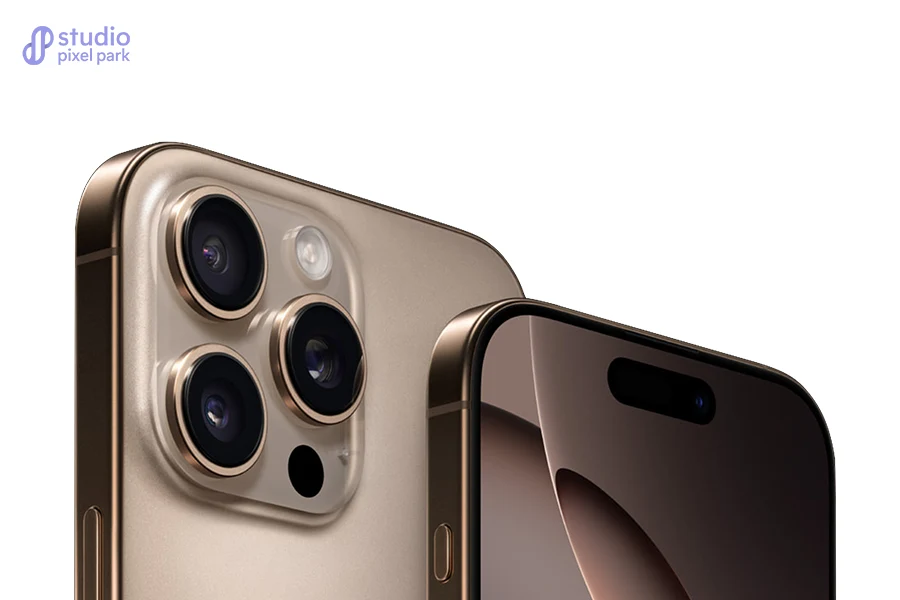
The iPhone 16 Pro Max camera has a primary 48MP main sensor with quad pixels and f/1.78 aperture equivalent to 24mm. The camera has an advanced Photonic Engine 2.0 for best low-light performance. The phone camera has a built-in A18 pro chipset that runs the entire phone swiftly.
The Ultra-wide also has a 48MP sensor with Dual Pixel AF and f/2.2 aperture equivalent to 13mm. The periscope tele lens has 6x times optical zoom and f/2.8 aperture equivalent to 120mm for detailed shots.
The camera has an action mode setup that delivers ultra-smooth video stabilization, even in motion. For portrait and AR photography, the iPhone camera is considered to be the best due to its Lidar Scanner process. The ProRAW and ProRes support gives any user professional-level editing and filming.
The phone’s weight is 7.99 ounces (227 grams).
Pros: The color accuracy is true-to-life with consistent white balance and color rendering. There is no quality drop when it comes to zoom. The user-friendly interface is simple for anyone with skill levels.
Also, the ecosystem is integrated with Apple Intelligence (AI). The HDR optimization is of industry-standard quality. This has fast and accurate autofocus with excellent levels of detail and texture in bright light.
Cons: The optical zoom is limited since others are offering 10x or more. When using Pro features, the phone storage requires extra space. The three apertures are fixed with limited control compared to variable apertures.
The group shots result narrow depth of field with an in-and-out focus background. Advanced users may find the lack of manual controls very restrictive. The prices of each model with different storage space are quite expensive.
Samsung Galaxy Ultra 24 Camera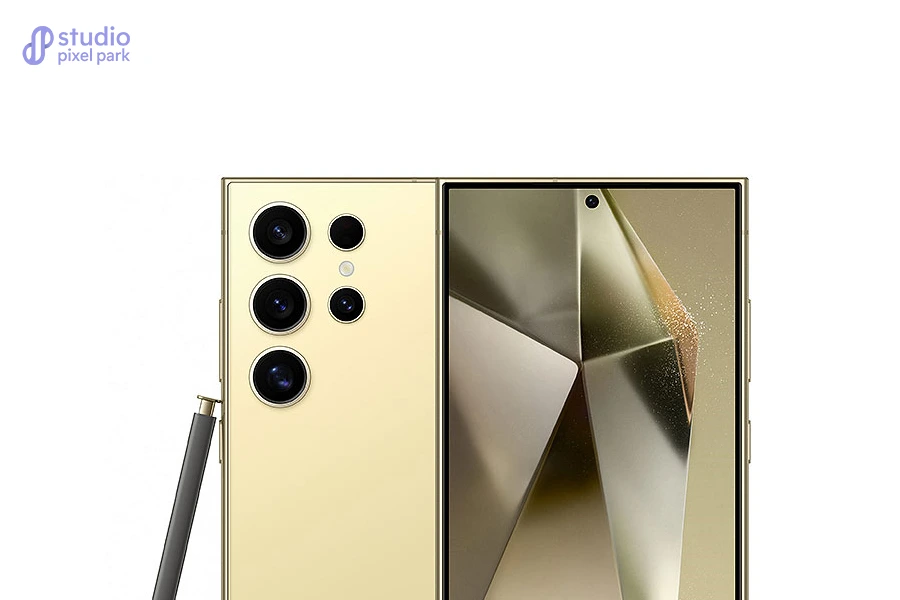
The Samsung Galaxy Ultra 24 camera has a primary 200MP main sensor with f/1.7 aperture equivalent to 24mm. The super Quad-Pixel autofocus improves precision in low-light and dynamic environments. The Ultra-wide also has a 12MP sensor with f/2.2 aperture equivalent to 13mm.
The First Tele has 10MP and the second has 50MP. The 10x periscope zoom gives crystal-clear shots of distant subjects. The Samsung camera is known for its 100x space zoom, where the optical and digital zoom combine for extreme close-ups. The phone camera can shoot video 8k at 24/30fps and 4k at 30/60/120fps.
The phone’s weight is 8.18 ounces (232 grams).
Pros: The high-resolution photos show stunning details with vivid and pleasant brightness. The zoom capabilities come in a wide range from ultra-wide to extreme telephoto.
The phone’s nightography is incredible when used in low-light situations. There is a wide array of customization options for manual settings for dynamic photography.
Cons: The image processing can be over-sharpening sometimes. Sometimes, the over-sharpening can result in artificial-looking photos. The camera bump is quite hefty, which makes the phone less ergonomic.
Extensive use of camera features can drain the battery life quickly. The camera app can be overwhelming for casual users. The quality of photos can drop off at extreme zoom levels.
Google Pixel 9 Pro Camera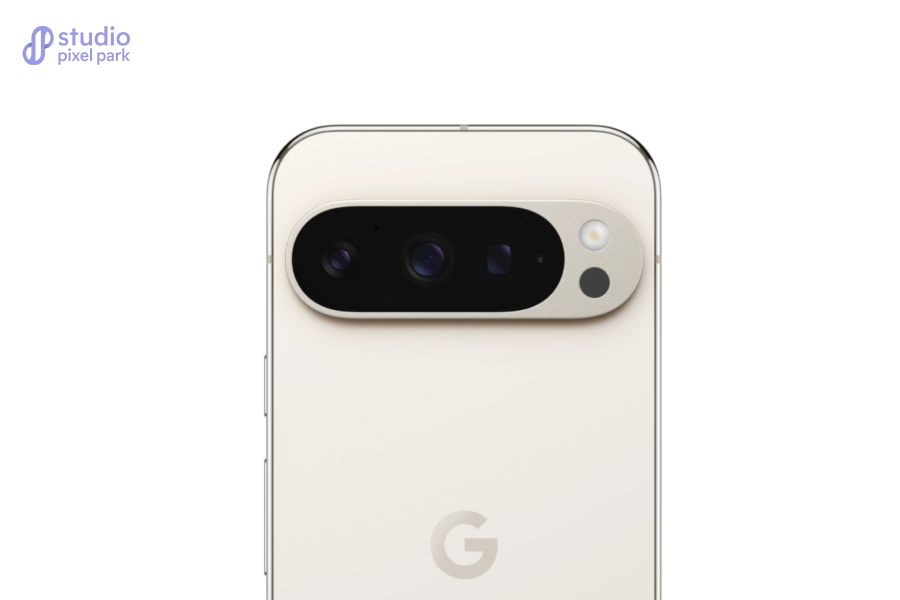
The Pixel 9 Pro uses Google’s Tensor G3 AI chip for smarter processing with a 50MP, 1/1.31” sensor and an aperture of f/2.68. The ultra-wide also has a 48MP, 1/2.55 sensor with an aperture of f/1.7. The tele lens is 48MP with an aperture of f/2.8. The phone camera captures diverse skin tones with remarkable accuracy.
This has an astrophotography mode for capturing star-filled night skies. The periscope telephoto comes is a 5x optical zoom lens with Super Res Zoom for enhanced digital performance. The phone has an AI-based magic editor tool for removing unwanted objects seamlessly.
The phone’s weight is 7.02 ounces (199 grams).
Pros: The HDR is best in class, with built-in AI-powered photography. That simplifies the capturing of high-quality photos effortlessly. The phone camera is compact and lightweight.
This is much more affordable than others compared to its price and complex processing systems. The autofocus is fast and reliable, giving advantages from the field of view correction in video mode.
Cons: The phone camera has limited manual controls. This is not ideal for advanced photographers seeking creative flexibility. The optical zoom is limited as others are offering 10x zoom or more.
There is a video recording limitation, where this phone camera lacks advanced pro features like ProRes. Extended camera use can cause overheating. The design durability is not well built, as the back-side is glass back, which can lead to scratches and smudges.
Sony Xperia 1 VI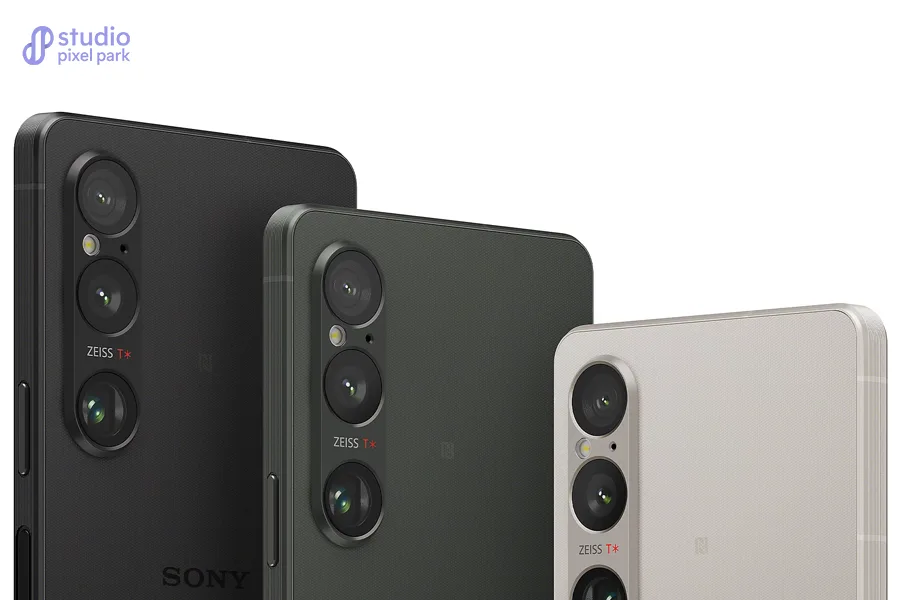
The Sony Xperia 1 VI phone camera features a main 48MP, 24mm f/1.9 wide camera. The ultra-wide camera comes with 12MP, 16mm f/2.2 for versatile shooting. The telephoto is 12MP 85-170mm with an aperture of f/2.23-3.5 zoom camera.
This phone camera has a triple camera system with a Zeiss T Lens coating to reduce the ghosting and flare for crystal-clear images. There is a dedicated shutter button that mimics a DSLR-like control for precise photography.
The phone’s weight is 6.77 ounces (192 grams).
Pros: The phone camera has a professional-grade feature like manual controls with fine-tuned settings for ISO, shutter speed, and focus. This can record video at 4K with up to 120fps supporting slow-motion recording for cinematic content creation.
Also, there is a 4K display viewfinder. A 21:9 OLED 4K screen provides an accurate preview for detailed editing and composition. The color rendition is natural and accurate due to Zeiss optics and Sony’s image processing. Variable telephoto lens offers more flexibility compared to fixed telephoto zooms.
Cons: There is a steep learning curve as the phone camera comes with advanced camera settings. This has a low-light limitations. While it’s average, it lacks the AI-based computational improvements seen in rivals like Google’s Pixel and Samsung’s Galaxy. This phone focuses more on manual controls than AI enhancements.
The average battery life drains quickly due to the extended usage of 4K video and camera. The price might be costly which can deter casual users as this is considered a niche device.
OnePlus 12 Camera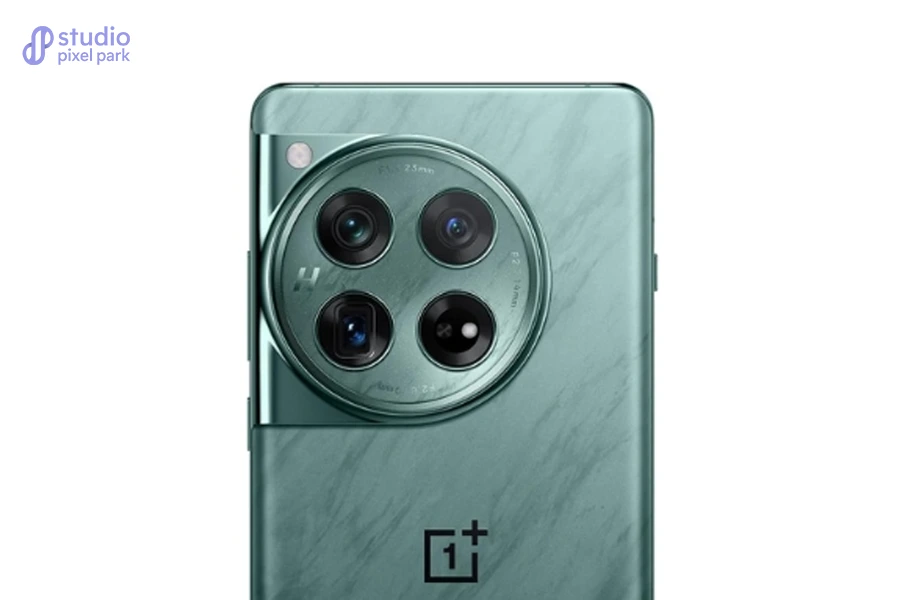
The OnePlus 12 camera has a main 50MP with a Sony IMX989 main sensor. The large 1-inch sensor is improved for light capture. The Hasselblad color calibration provides vibrant and accurate colors. This has a real-time HDR recording for cinematic-quality footage.
The periscope telephoto lens features from 3x optical zoom to 30x hybrid zoom. The ultra-wide sensor is paired with an expansive field of view with minimal distortion.
The phone’s weight is 7.76 ounces (220 grams).
Pros: This flagship-level features at a lower price point. The camera has a fast autofocus for dynamic subjects. The phone camera can capture bright and detailed shots in dim conditions with low-light performance. The design is sturdy and durable.
Cons: The zoom features lag short of Samsung’s extreme zoom capabilities. The average battery life drains quickly due to the extended usage of 4K videos.
The software updates are slower compared to other competitors. The phone camera’s portrait mode struggles with edge detection in certain conditions. There are no ProRaw alternatives, which limits the flexibility for post-processing.
Smartphone cameras have revolutionized e-commerce photography by making it accessible and affordable. They are particularly useful for small businesses and startups aiming to establish an online presence.
Pro Tips for Stunning Smartphone Cameras Product Shots:
- Use features like HDR and AI-enhanced modes to balance shadows and highlights. These features combine multiple exposures to deliver detailed and exposed shots.
- Use multiple lenses like wide, telephoto, macro. The micro-lens is used for intricate details and the telephoto lens is used for minimized distortion in product shots.
- Use a tripod or gimbal to ensure stability for delivering sharper and professional-quality images.
- Use softbox or LED panels for lighting with artificial sources as smartphone cameras have a limited dynamic range.
- Use apps like Adobe Lightroom mobile version or Google’s Snapseed for editing needs.
Above, you’ll find a carefully curated list of the best cameras of 2025. These selections represent the finest alternatives available in the market today. Each camera was chosen after extensive research, ensuring they meet the diverse needs of photographers. Consider these options to ensure your product images truly stand out.
Budget-Friendly & High-End Cameras for Product Photography
When choosing cameras for product photography, the balance between budget-friendly and high-end options is vital. Budget cameras are ideal for startups and small-scale operations, offering reliable performance at affordable prices.
High-end cameras cater to professionals who require advanced features, peak resolution, and robust adaptability for diverse photographic challenges.
Budget-Friendly Cameras:
-
- Canon PowerShot G7 X Mark III
- Sony ZV-1
- Nikon D7500
- Canon EOS R6
Budget-Friendly Camera’s Impact on Product Photography:
The budget cameras provide an accessible gateway into product photography, focusing on high-quality outputs without heavy investments. The Canon PowerShot G7 X Mark III excels in delivering sharp, well-lit images, ideal for e-commerce platforms. This camera’s user-friendly features ensure even beginners can achieve professional results.
On the other hand, the Nikon D7500 offers enhanced dynamic range and low-light performance, which is vital for product photos requiring minimal shadows and accurate color representation. These options empower small businesses to create high-quality product images, boosting online visibility and consumer trust.
High-End Cameras:
-
- Sony Alpha A7 IV
- Canon EOS 90D
- Hasselblad X2D 100C
- Fujifilm X-T5
High-End Camera’s Impact on Product Photography:
High-end cameras redefine product photography with their advanced technologies. The Sony Alpha A7 IV comes with exceptional resolution and precise autofocus. This can capture intricate product details that influence customer perceptions. Studies suggest that detailed images are more likely to lead to conversions, particularly in luxury markets.
On the other hand, the Hasselblad X2D 100C is a medium-format powerhouse that has a 100MP sensor. This camera can ensure unmatched clarity and tonal depth in photos. This level of precision is essential for luxury brands aiming to showcase exclusivity and quality.
Additionally, cameras like the Fujifilm X-T5 offer versatility for both stills and videos, supporting multimedia marketing strategies for e-commerce.
All these cameras, whether budget-friendly or high-end, play a crucial role in enhancing product presentation, ensuring businesses-large or small can effectively meet their photographic needs.
Best Budget Camera for DIY Product Photography
Starting with the right budget camera can transform DIY product photography, allowing creators to achieve professional results without heavy expenses. Here are two standout cameras:
Canon EOS Rebel T7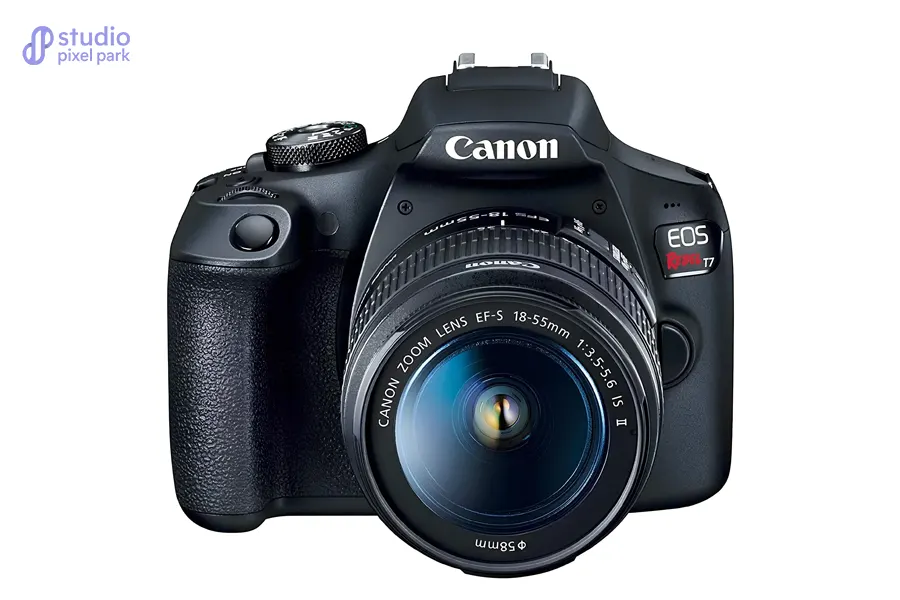
The Canon EOS Rebel T7 offers an accessible entry point for DIY photographers. With its high-resolution capabilities and user-friendly interface, this camera simplifies capturing sharp, vibrant images. Its built-in Wi-Fi enables seamless photo sharing, a crucial feature for quick uploads to e-commerce platforms or social media.
Sony ZV-1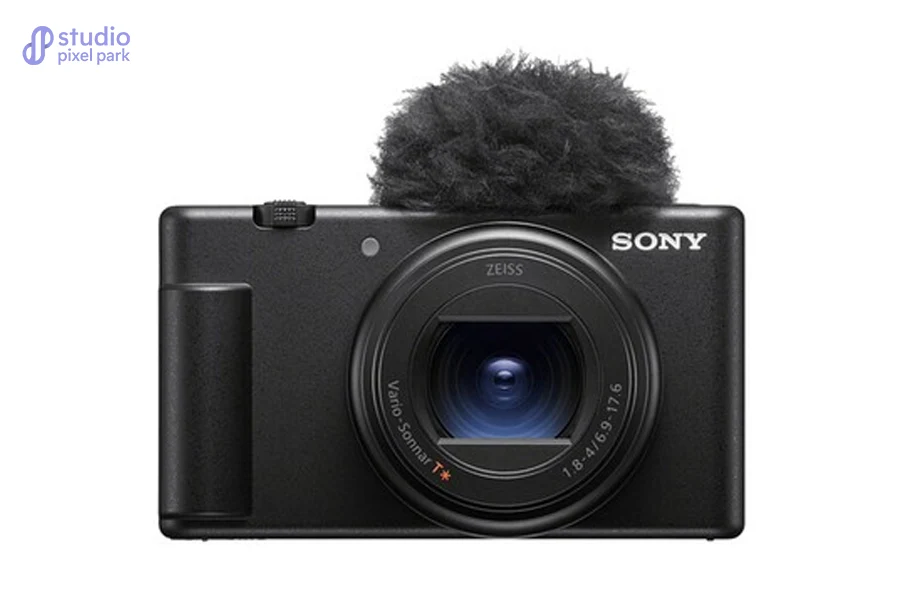
The Sony ZV-1 is compact yet powerful, making it ideal for DIY photographers working in smaller spaces. Its advanced autofocus ensures the subject remains sharp, while its versatile lens captures intricate details of products, from texture to fine finishes.
Budget-Friendly Camera’s Impact on DIY Product Photography
Budget-friendly cameras like these lower barriers for creators who want control over their visual branding. Scientific studies highlight that high-quality product images can improve customer trust by up to 70%, directly influencing purchase decisions.
For example:
-
- Sharp details provided by cameras like the Rebel T7 improve perceived product quality.
- Accurate color reproduction minimizes returns due to a gap between expectations and reality.
- Cameras with strong low-light performance, like the ZV-1, allow creators to achieve professional results without expensive lighting setups.
These cameras make DIY product photography both affordable and impactful, giving small businesses to enhance their online presence with high-quality visuals.
What Cameras Do Beginner Photographers Use?
Beginners photographers often look for cameras that combine ease of use, affordability, and sufficient features to help them learn the basics of photography.
Choosing the right camera for a beginner can make a significant difference in skill development and confidence. Here are some of the best options in 2025:
Canon EOS Rebel T8i (EOS 850D)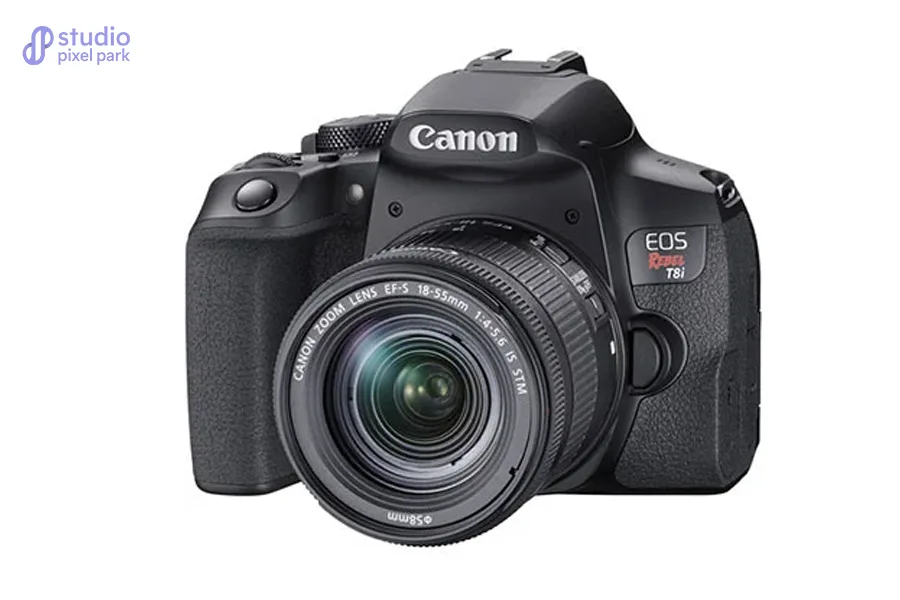
This DSLR is beginner-friendly with intuitive controls, excellent image quality, and a vari-angle touchscreen. This offers a guided mode that helps new users understand camera settings.
Nikon Z50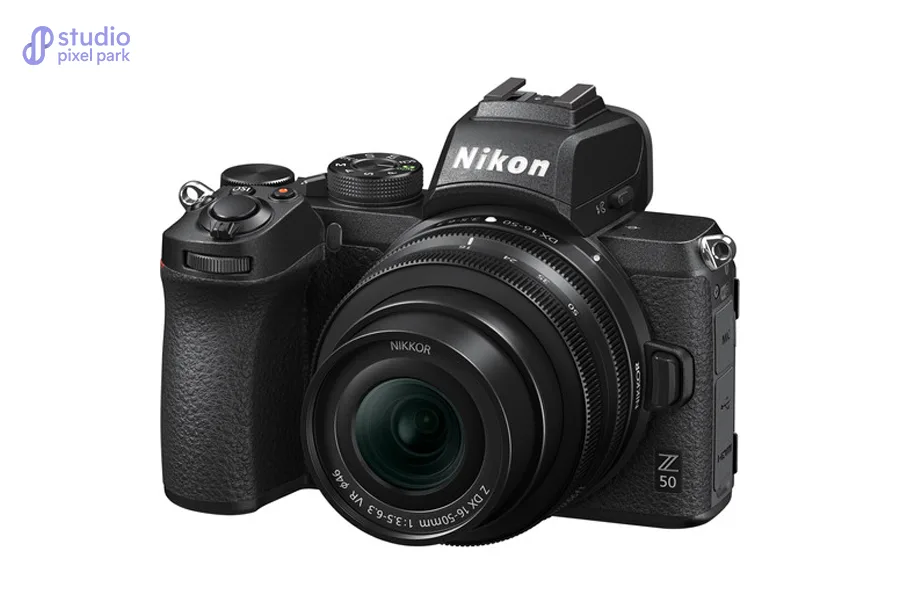
A compact mirrorless camera with a beginner-friendly design, it delivers excellent low-light performance and sharp images. It also offers 4K video capabilities for versatile use.
Sony Alpha a6100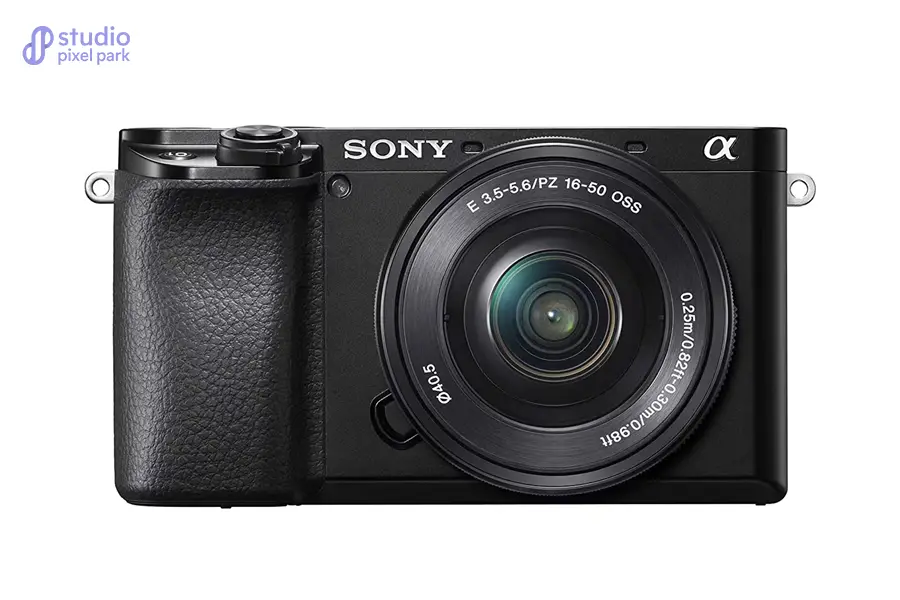
The camera is known for its autofocus and high-resolution sensor, this mirrorless camera is ideal for beginners interested in action or portrait photography. The real-time tracking feature is a standout.
Fujifilm X-T200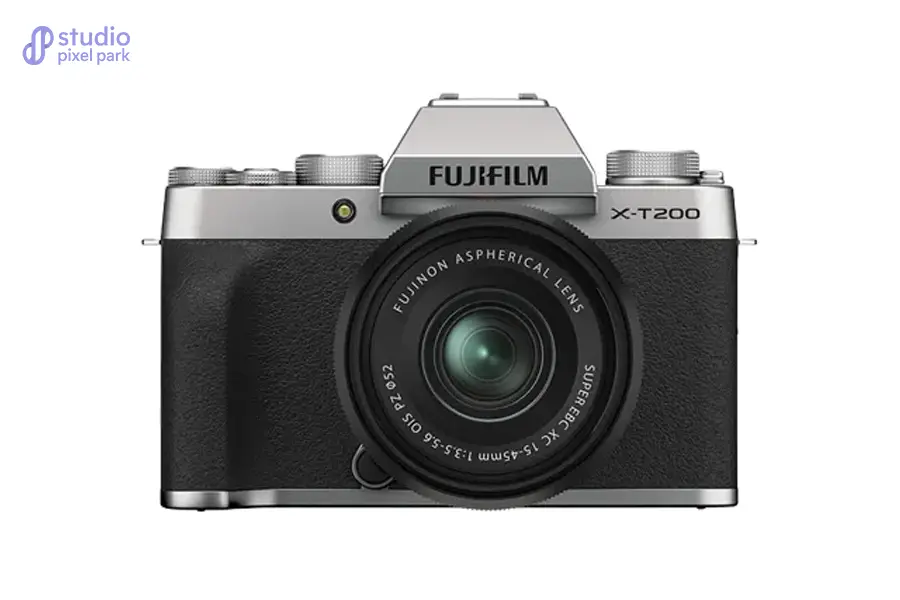
The camera’s retro design and easy-to-navigate interface help beginners produce great images. The film simulation modes appeal to new photographers.
Nikon D3500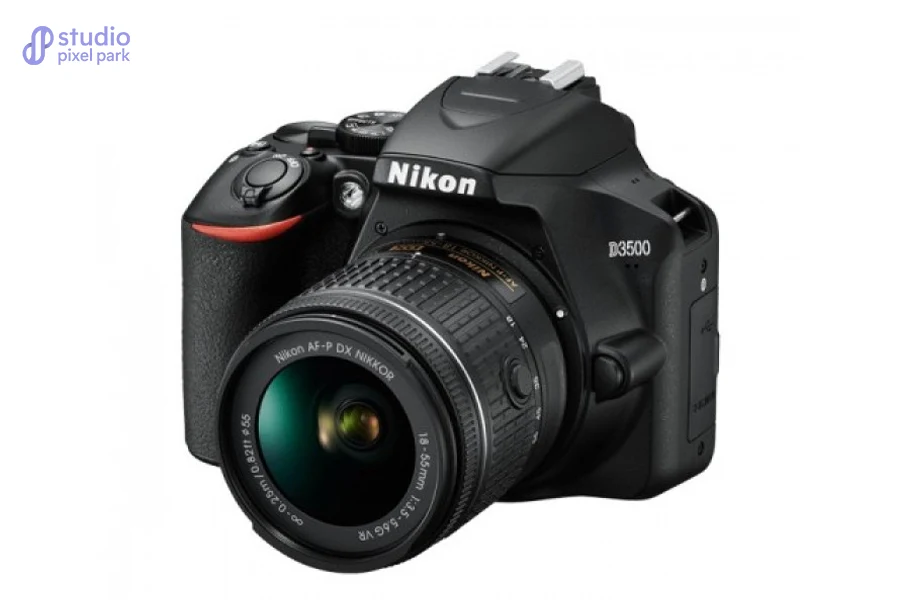
The classic DSLR is often recommended for beginners due to its simplicity, excellent battery life, and guide mode.
Panasonic Lumix Gx85 (GX80)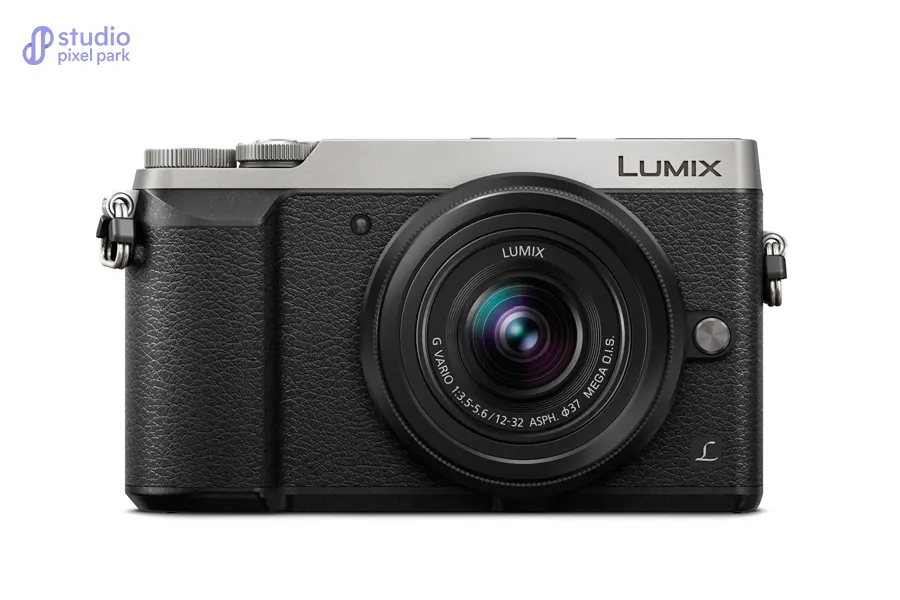
This budget-friendly mirrorless camera comes with dual image stabilization. This is considered great for photos and videos. The intuitive controls are beginner-friendly.
iPhone 16 Pro Max or Samsung Galaxy S24 Ultra (Smartphone Camera)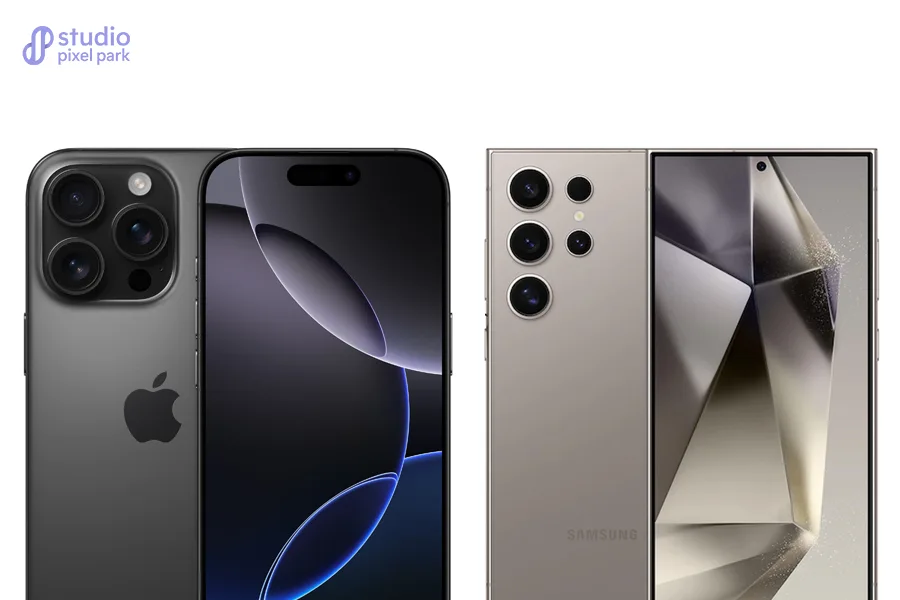
Advanced smartphone cameras are a great starting point for beginners who want convenience and portability without compromising on image quality.
These cameras cater to beginners by providing a balance of usability, features, and value, helping them build their skills while achieving stunning results.
Key Considerations When Choosing a Camera for Product Photography:
Selecting the right camera for product photography is essential for capturing high-quality images that effectively highlight your products. This guide breaks down the steps and factors to consider when choosing a camera, ensuring you make an informed decision. Below, you’ll find the informative guide.
Understand Your Budget
Understanding your budget is the foundation of the selection process. Cameras vary in price, from affordable options like compact cameras to premium medium-format cameras, which can cost over $10,000. While higher-end cameras deliver exceptional performance, many affordable cameras for product photography (ranging from $500 to $1,500) offer professional-quality outputs.
Budgeting should account for all the accessories such as lenses, tripods, lighting equipment, cases, power banks, portable storage, cleaning tools, remote controls, etc. These accessories can range anywhere from $200 to $2,500.
Assess Image Resolution and Sensor Size
A camera’s resolution, measured in megapixels, defines image clarity. For product photography, a minimum of 20 megapixels is recommended. This provides enough detail for high-resolution prints and digital use. For example, a 24MP DSLR can produce prints up to 20 × 30 inches without losing quality.
Sensor size also plays a vital role. Full-frame sensors, roughly 36 × 24 MM in size, capture lighter and detail than APS-C or micro four-thirds sensors.
This makes them ideal for Amazon product photography or capturing detailed textures like fabrics and jewelry. Studies show that larger sensors improve dynamic range and color accuracy. This is essential for premium brands aiming to highlight intricate product details.
Match Camera Types to Your Needs
Different camera types cater to various product photography demands. Below, you’ll find the breakdown, but remember that different cameras work for different shots and that not all of them are best for product photography.
DSLR and Mirrorless Cameras: These cameras are renowned for their versatility and superior image quality. They offer interchangeable lenses and advanced controls, making them ideal for professionals and semi-professionals.
Compact Cameras: Lightweight and beginner-friendly, they provide decent quality for small-scale projects but lack manual control options.
360-Degree Cameras: These are perfect for e-commerce, allowing customers to view products from all angles. Studies show that 360-degree images can boost online sales by 30%.
Smartphone Cameras: Suitable for quick shoots but limited by smaller sensors and lens quality. High-end models, like the iPhone Pro series, Samsung Galaxy S Ultra series, or Google’s Pixel series include computational photography for enhanced outputs.
Bridge Cameras: Offer a mix of DSLR-like controls and fixed lenses, making them a middle-ground choice for intermediate photographers.
Medium Format Cameras: Exceptional for capturing extreme detail, especially in large prints or luxury items. A 50MP medium format camera can capture textures invisible to the naked eye.
Rugged Cameras: These are designed to withstand extreme conditions; they are ideal for outdoor product shots. This ensures durability and reliability.
Digital Cine Cameras: Tailored for video-centric projects, delivering cinematic-quality footage alongside stills.
Film Cameras: Offers a nostalgic aesthetic but requires significant expertise and post-production work.
Focus on Lens Compatibility
The lens is as crucial as the camera body. Macro lenses (e.g., 90mm f/2.8) are ideal for capturing intricate details, while wide-angle lenses are better for larger items.
Lenses with low aperture values (e.g., f/1.8) allow more light, enhancing performance in dimly lit settings. The DSLRs and Mirrorless cameras excel in this category due to their extensive lens eco-systems.
Consider Advanced Features
Modern cameras include advanced functionalities that enhance usability and image quality. Look for these features:
Manual Controls: Essential for adjusting exposure, shutter speed, and aperture.
High ISO Performance: Cameras like the Sony A7 III handle ISOs up to 12,800 with minimal noise, useful for low-light shoots.
4K or 8K Video Support: Necessary for projects involving high-resolution videos alongside stills.
Images Stabilization: Reduces motion blur in handheld shots.
Wi-Fi and Bluetooth: Streamlines file transfers and enables remote shooting.
Evaluate Build Quality and Ergonomics
Durability and ergonomics significantly impact productivity. Cameras with magnesium alloy bodies are more robust and resistant to wear.
Features like tilting screens and customizable buttons improve ease of use during long shoots.
For example, rugged cameras like Olympus Tough TG-6 withstand drops from 2 meters and function in sub-zero temperatures.
Test Practical Usability
Before deciding, test shortlisted cameras in-store or consult in-depth reviews. Key evaluation aspects include user interface, battery life (e.g., DSLR batteries often last 800+ shots per charge), and compatibility with existing gear.
By considering all these factors, you can confidently select the best camera for professional photography tailored to your unique requirements. A carefully chosen camera ensures your product images not only meet but exceed industry standards, captivating audiences, and driving sales.
FAQs.(Frequently Asked Questions)
1. What ISO Should I Use for Product Photography?
ISO settings determine a camera’s sensitivity to light. A low ISO (100-400) for product photography is ideal as it minimizes noise and ensures clarity. Higher ISO levels might be required for low-light settings but can introduce graininess.
Scientific tests indicate that cameras with advanced sensors, such as full-frame models, maintain image quality even at higher ISO levels.
2. DSLR vs. Mirrorless: What’s Best for Product Photography?
Both DSLRs and Mirrorless cameras excel in product photography. DSLRs are renowned for their durability and optical viewfinders, while mirrorless cameras offer compact designs and cutting-edge technology.
Market analysis shows mirrorless models gaining popularity due to faster autofocus and superior video capabilities, making them ideal for photo and video shoots.
3. What type of lens is best for product photography?
Lenses play a pivotal role in achieving sharp, vibrant images. Macro lenses are perfect for small products like jewelry, while standard lenses (50mm-85mm) work well for versatile shots. Wide-angle lenses can distort images, so they’re best for large items like furniture photography.
Investing in prime lenses ensures consistency and superior image quality. Having multiple lenses is a great investment for any photographer for future plans.
4. Which mode is best for product photography?
Manual mode provides full control over exposure settings, crucial for capturing product details. Aperture priority mode is beneficial for managing depth of field, ensuring the product stays in focus while the background blurs artistically.
Scientific evaluations reveal that manual settings often result in superior outcomes for product photography.
5. Do you need a tripod for product photography?
A sturdy tripod ensures stability, allowing for slower shutter speeds and sharper images. Tripods with adjustable heads and height settings enable flexibility.
Research indicates that 80% of professional photographers rely on the tripod for consistent results, especially in studio environments. Besides, day by day the camera’s body is getting heavier to handle, so it’s necessary to have a tripod.
6. Which camera is widely used in professional photography?
Professional product photographers rely on high-performance cameras to deliver exceptional image quality. Here’s a list of the top cameras widely used in 2025:
Canon EOS R5
The Canon EOS R5 is a mirrorless camera that is a favorite among professionals. The 45MP full-frame sensor provides ultra-high resolution, capturing intricate product details.
The 8K video capability ensures stunning videos for e-commerce and advertising. With a dynamic range of 14 stops, it handles lighting variations seamlessly.
Sony A7R IV
Renowned for its 61MP resolution, the Sony A7R IV is a powerhouse for detailed product photography. it boasts exceptional autofocus with 567 phase-detection points, ensuring sharp images. With ISO sensitivity ranging from 100 to 32,00, this camera excels in low-light conditions.
Also, the camera is ideal for jewelry or small product shoots.
Nikon Z9
The Nikon Z9 combines a 45.7MP sensor with advanced AI-powered autofocus, making it one of the best cameras for professional product photography. This has a ProRes 422 HQ video recording system that supports high-end multimedia projects. With a shutter speed of 1/32,000 seconds, this can capture fast-moving items like spinning watches with precision.
Fujifilm GFX 100S
This medium format camera offers a stunning 102MP resolution. This camera is ideal for luxury product photography. This delivers exceptional depth and dynamic range, essential for high-end brands. The GFX 100S’s pixel-shift technology produces ultra-detailed images, making this perfect for billboard ads.
Panasonic Lumix GH6
This camera is designed for hybrid professionals. The camera has 5.7K video recording and a 25MP sensor, which helps in creating vibrant visuals for product photography.
This is a highly portable camera for on-the-go shoots. These cameras represent the pinnacle of cameras for professional photography, catering to diverse needs such as studio shoots, outdoor settings, and multimedia projects.
Final Thoughts
Choosing the best camera for product photography in 2025 depends on your specific needs, budget, and the type of products you aim to showcase. The diverse array of cameras available ensures there is an option for every level of expertise and purpose, whether you’re an e-commerce seller, a professional photographer, or a content creator.
For those looking for precision and high-quality results, full-frame DSLR and mirrorless cameras, such as the Canon EOS R5 or Sony A7R IV, continue to dominate the market with their superior resolution and versatility. Meanwhile, medium format cameras like the Fujifilm GFX 100S remain unparalleled for luxury product photography due to their exceptional detail and dynamic range.
Compact cameras and smartphone cameras, such as the iPhone 16 pro max cater to smaller-scale projects or social media needs, offering portability and ease of use.
Technological advancements in AI-powered autofocus, image stabilization, and high-resolution video have revolutionized product photography. Cameras now deliver sharper, more vibrant, and professional-quality images even in challenging conditions.
In addition, 360-degree cameras and rugged cameras provide innovative solutions for unique product presentations or outdoor environments.
Ultimately, understanding your requirements and carefully considering factors like sensor size, resolution, lens compatibility, and additional features will help you select the ideal camera for professional photography.
By investing in the right equipment, you can ensure your product images stand out, captivating your audience and driving sales.
Hadi Zaman is a marketing specialist and content writer who loves tech, story writing, and content creation. With years of experience, he creates easy-to-read content that connects with readers. Inspired by new ideas and personal experiences, Hadi makes complex topics clear and relatable.
